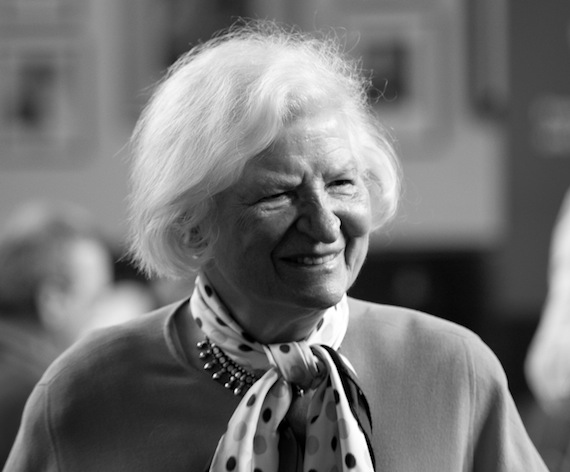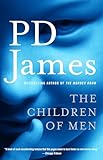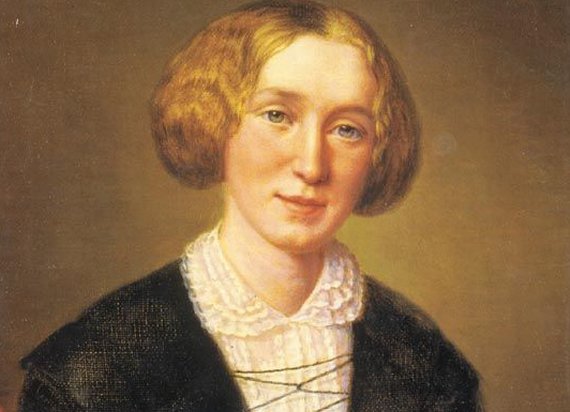
The post was produced in partnership with Bloom, a literary site that features authors whose first books were published when they were 40 or older. Click here to read about “Post-40 Bloomers,” a monthly feature at The Millions.
1.
Years ago, a friend of mine complained about the lack of intellectual stimulation at his day job. He gave as an example a coworker who spent her breaks reading — insert scorn here — a mystery novel. “Whose mystery is it?” I remember asking. “If it’s by, say, P.D. James, then your coworker is probably pretty smart.” A few weeks later, my friend called me back. “The book was P.D. James, and she is really smart.”
Phyllis Dorothy James White, the daughter of a tax inspector, has more than a dozen honorary doctorates and fellowships, and from institutions as eminent as Oxford and Cambridge. At 15 or 16, she won her high school’s prize for a story she describes as “low in credibility but high on drama and atmosphere” (she no longer has a copy). Her father was “not well off and not disposed to educate girls,” so James left school at 16 to work in a tax office, only returning to formal education decades later for night classes in hospital administration. Around that time, her mother was committed to a mental hospital, leaving James to care for her younger siblings. In a 1995 interview with The Paris Review, she said, “I would have loved to have gone to university, but I don’t think I would necessarily have been a better writer, indeed perhaps the reverse.” Regardless, her books abound with highly educated, often-influential characters who spout references to classic British literature and debate fine points of moral theology; and her most enduring creation, the fictional detective Adam Dalgliesh, is both a commander at New Scotland Yard and a famous poet. (He also shares a surname with one of James’s English teachers at Cambridge High School for Girls.)

 In the decades before she published her first novel, Cover Her Face, at 42, James married an army doctor, survived World War II, struggled to raise two daughters when her husband returned from the war incapacitated by a mental illness that may have been schizophrenia, and worked full time to support her family. In the decades since, she has written 16 detective novels (including a sequel to Pride and Prejudice in which one of the characters is murdered), a disquisition on the history of detective fiction, a memoir, and the dystopian morality tale The Children of Men. She was honored with the title of baroness by Queen Elizabeth and has subsequently sat on the Conservative benches of the House of Lords. Despite her success as a novelist, she kept her administrative job until she retired at 60, a decision she attributes to growing up during the Depression, when secure civil service jobs were coveted. As recently as last October, she claimed to have cracked an unsolved 1931 murder.
In the decades before she published her first novel, Cover Her Face, at 42, James married an army doctor, survived World War II, struggled to raise two daughters when her husband returned from the war incapacitated by a mental illness that may have been schizophrenia, and worked full time to support her family. In the decades since, she has written 16 detective novels (including a sequel to Pride and Prejudice in which one of the characters is murdered), a disquisition on the history of detective fiction, a memoir, and the dystopian morality tale The Children of Men. She was honored with the title of baroness by Queen Elizabeth and has subsequently sat on the Conservative benches of the House of Lords. Despite her success as a novelist, she kept her administrative job until she retired at 60, a decision she attributes to growing up during the Depression, when secure civil service jobs were coveted. As recently as last October, she claimed to have cracked an unsolved 1931 murder.
 James intended 2008’s The Private Patient to be the last Adam Dalgliesh novel, confessing to USA Today in 2010 that, at 90 years old, “I felt I wasn’t quite sure whether I could begin a new Dalgliesh…I hate the thought of not completing it.” In an April 2013 interview with the London Evening Standard, she revealed that she hoped to bring Dalgliesh back for a 15th book, in which she plans for Dalgliesh (whom James describes as “a reverent agnostic”), like his creator, to confront the certainty of his own death. But by December 2013, she again expressed doubts about her ability to finish: “[b]ut I have no time, no time at all and I do not think [the book] is going to get written, and I am just having to face that…but I hope it may get written.” Undoubtedly, so do her fans.
James intended 2008’s The Private Patient to be the last Adam Dalgliesh novel, confessing to USA Today in 2010 that, at 90 years old, “I felt I wasn’t quite sure whether I could begin a new Dalgliesh…I hate the thought of not completing it.” In an April 2013 interview with the London Evening Standard, she revealed that she hoped to bring Dalgliesh back for a 15th book, in which she plans for Dalgliesh (whom James describes as “a reverent agnostic”), like his creator, to confront the certainty of his own death. But by December 2013, she again expressed doubts about her ability to finish: “[b]ut I have no time, no time at all and I do not think [the book] is going to get written, and I am just having to face that…but I hope it may get written.” Undoubtedly, so do her fans.
2.
James resists what she sees as an artificial divide between literary and genre fiction. She takes pains, however, to draw distinctions between the detective fiction she writes and other species of crime novels — particularly ones in which the reader knows the murderer’s identity but the characters don’t, or in which, for the sake of suspense, the author deliberately withholds from the reader facts that are known to the characters. By contrast, a true detective novel makes a compact with the reader, as James explains in Talking about Detective Fiction:
What we can expect is a central mysterious crime, usually murder; a closed circle of suspects, each with motive, means and opportunity for the crime; a detective, either amateur or professional, who comes in like an avenging deity to solve it; and, by the end of the book, a solution which the reader should be able to arrive at by logical deduction from clues inserted in the novel with deceptive cunning but essential fairness.
A well-crafted detective novel fulfills the same essentials of “a perfect tragedy” as outlined in Aristotle’s Poetics: it begins with catastrophe; calls forth fear, pity, and finally recognition; and invokes catharsis — a purging of emotion and restoration of order. As James herself pointed out in a 2009 interview for NPR’s Morning Edition, “The theory is that the mystery flourishes best in times of acute anxiety.” Any reader who picks up a murder mystery does so with absolute assurance that the murderer will be caught and brought to justice by the end, which partly accounts for the genre’s popularity. Within this structure, however, writers can (and do) weave social and political commentary, unresolved and conflicted relationships, philosophical and ethical questions, and often unsettling portraits of lives before and after a murder.
Another of the detective novel’s pleasures is that it asks the reader to solve the central mystery along with the detectives. The author unveils facts as the characters experience them, while simultaneously manipulating these revelations in ways that create deception and misdirection; but both the solution and the process of discovering it are supremely logical. Says James: “The detective can know nothing which the reader isn’t also told …It would be a very, very bad detective story at the end if the reader felt, ‘Who could possibly have guessed that?’” In the end, the detective’s (and the reader’s) triumph reaffirms the power of humanity over forces of darkness and sometimes terror. As James puts it, the mystery is “solved not by good luck or divine intervention…It’s solved by a human being. By human courage and human intelligence and human perseverance. In a sense, the detective story is a small celebration of reason and order in our very disorderly world.”
James admits that she abhors disorder: “In a long life, I have never taken a drug or got drunk, and I say that not as a matter of pride: it’s because the idea of being out of control is appalling to me. I think that when one writes detective stories one is imposing order, and a form of imperfect but human justice, on chaos.” Yet her flirtation with disorder, the terror that an ordinary person could transform into a killer or a killer’s victim, shares more with the complexity of literary fiction than it does with the tidy plots and flat characterization in, say, Agatha Christie mysteries. She has no interest in mass murders or psychopaths, she explained in a 2010 Telegraph interview: “They don’t interest me as much from a crime writing point of view because they kill without recognisable (sic) motives. What is fascinating is when you have an educated, law-abiding person who steps over a line.”
3.
 In Time to Be in Earnest, James recounts a day when she was feeding her baby daughters butter that her husband, Dr. Ernest Connor Bantry White, had sent from where he was stationed in India.
In Time to Be in Earnest, James recounts a day when she was feeding her baby daughters butter that her husband, Dr. Ernest Connor Bantry White, had sent from where he was stationed in India.
I was feeding fingers of toast into Jane’s buttery mouth that I heard…the news of the dropping of the atomic bomb…I knew that the dropping of the bomb would almost certainly bring Connor home earlier and probably safely. But it was still, for me, a moment of horror and, looking almost aghast at my two happy, buttery daughters…I knew that for all of us the world had changed for ever.
Sadly, her husband’s return from the war brought James neither peace nor safety. Suffering from psychosis, Connor was in and out of mental hospitals and sometimes violent. In 1986, pressed by an interviewer, she said, “He did have highs and lows. It was terrifying and terribly disruptive. It’s not a part of my life that’s very happy for me, and I don’t think about it often.” He died at 44 in what some articles have suggested may have been a suicide, but James has rarely discussed him and has never disclosed the details of his death. “One suffers with the patient and for oneself,” she writes in Time to Be in Earnest. “Another human being who was once a beloved companion can become not only a stranger, but occasionally a malevolent stranger.”
She never considered divorce even when it became clear that Connor would never be well again, and she has turned down more than one marriage proposal. Asked in 1986 why she had never remarried, she replied, “Connor was a very exceptional man — one of the few men I’ve met who really believed in the equality of women…I certainly miss my husband as much now as when he first died…We did have a mutual understanding. But I’m not sure one can find that very easily in another man.” Her love for her late husband was just as strong in a 2010 interview: “If I had met someone I wanted to spend the rest of my life with, I would have. I had men friends and I like men generally but I never met the right one again.” Her husband, troubled as he was, was James’s great love.
4.

 Arguably, James’s other great love is her fictional hero, Adam Dalgliesh, who embodies good looks, poetic sensibility, uncompromising ethics, compassion, wisdom, and, most of all, dispassionate intellect. When we first meet him in James’s first novel, Cover Her Face (1962), he has lost his wife in childbirth more than a decade earlier and has remained resolutely single ever since. Cordelia Gray, a detective in James’s only two novels to feature a female protagonist, encounters Dalgiesh through the investigation in An Unsuitable Job for a Woman. In the next novel, A Taste for Death, Gray and Dalgliesh have been seen dining together, but James is too coy to discuss the nature of their relationship: “I’m afraid that as far as Adam’s sex life is concerned, what he does in private with a consenting adult is no affair of mine.”
Arguably, James’s other great love is her fictional hero, Adam Dalgliesh, who embodies good looks, poetic sensibility, uncompromising ethics, compassion, wisdom, and, most of all, dispassionate intellect. When we first meet him in James’s first novel, Cover Her Face (1962), he has lost his wife in childbirth more than a decade earlier and has remained resolutely single ever since. Cordelia Gray, a detective in James’s only two novels to feature a female protagonist, encounters Dalgiesh through the investigation in An Unsuitable Job for a Woman. In the next novel, A Taste for Death, Gray and Dalgliesh have been seen dining together, but James is too coy to discuss the nature of their relationship: “I’m afraid that as far as Adam’s sex life is concerned, what he does in private with a consenting adult is no affair of mine.”
Inevitably, interviewers ask about the relationship between James and her leading man. In a 1977 interview for The New York Times, James said of Dalgliesh, “I wanted a very sensitive, essentially lonely and withdrawn person;” by 1996, interviewed by People, she says, “I think in some ways he may be the masculine equivalent of me…He’s not a self-portrait, but he does have qualities I admire. He’s intelligent, he’s literary. I admire his sensitivities and certainly his courage and his self-sufficiency, but he may be too self-sufficient. I think there’s a splinter of ice in his heart.” Over the years, Dalgliesh’s character has softened somewhat — he falls in love over the course of the most recent four novels and finally remarries at the end of The Private Patient.
 As a character, Dalgliesh can sometimes be too exemplary to be convincing. For example, though he contracts SARS in The Lighthouse and ruminates on the possibility of never seeing his soon-to-be fiancée again, before he collapses he completes an examination of a body, gives exhaustive instructions to his subordinates, and, later, in his delirium, solves a key piece of the mystery and insists on holding staff meetings from his sickbed. At such moments, Dalgliesh’s personal life seems superfluous. In giving him one, James gestures toward continuity of character that readers can follow from novel to novel, but she has made him so dependably unimpeachable that his inner conflicts have far less resonance than those of his subordinates and the minor characters he encounters — many of whom are so sharply and compassionately observed that her disciplined main plots contain a kaleidoscope of tiny and evocative stories.
As a character, Dalgliesh can sometimes be too exemplary to be convincing. For example, though he contracts SARS in The Lighthouse and ruminates on the possibility of never seeing his soon-to-be fiancée again, before he collapses he completes an examination of a body, gives exhaustive instructions to his subordinates, and, later, in his delirium, solves a key piece of the mystery and insists on holding staff meetings from his sickbed. At such moments, Dalgliesh’s personal life seems superfluous. In giving him one, James gestures toward continuity of character that readers can follow from novel to novel, but she has made him so dependably unimpeachable that his inner conflicts have far less resonance than those of his subordinates and the minor characters he encounters — many of whom are so sharply and compassionately observed that her disciplined main plots contain a kaleidoscope of tiny and evocative stories.
In The Lighthouse, a servant grieves when she learns that a victim died wearing something she had sewed, tormented by the idea that the clothing had caused the death; Kate Miskin, Dalgliesh’s second-in-command, is acutely aware of the servant’s desolation but struggles to express compassion; her subordinate briefly recalls feeling as a child like his existence intruded on his parents’ intimacy: “Coming quietly and unexpectedly into a room where they were alone, he would see the cloud of disappointment quickly change to smiles of welcome — but not quickly enough.” In the last Dalgliesh novel, The Private Patient, the murder victim has waited 34 years to have plastic surgery for the scar left when her drunken father slashed her cheek with a bottle and her mother let the wound get seriously infected rather than reveal the abuse. Questioned by the doctor about her motives for removing the scar, she replies, “Because I no longer have need of it.”
5.
For Dalgliesh as well as James, solving the murder is paramount, and James’s novels are notable for the virtuosity with which their plots are executed. James’s 2005 novel, The Lighthouse, for instance, begins with Dalgliesh being summoned to his superior’s office: a murder has been committed on an isolated island where the Prime Minister would like to hold a private meeting in a few months. The island has no cell phone service, allows only VIPs personally referred by previous guests to visit, and can be accessed only by private boat. More than 100 pages elapse — in which each of the characters is painstakingly introduced — before the body appears, swinging dramatically from the island’s lighthouse railing as gulls (and a servant) shriek in the background. James narrows her gaze to the disquieting image of “the neck mottled and stretched like the neck of a bald turkey, the head, grotesquely large, dropped to one side, the hands, palms outward, as if in a parody of benediction.” The body belongs to a famous novelist, publicly celebrated for his brilliant writing, disliked on the island for his difficult personality, and privately loathed for spectacular cruelties that emerge during the investigation. A handful of suspects stand at the foot of the lighthouse and look up at the body; the permanent staff sequester themselves in a dining room to speculate about the current batch of visiting VIPs; Dalgliesh and team promptly swoop in by helicopter to investigate. Suddenly, the game is on.
It’s at this point that James’s novels make their bid for a place among the “Queens of Crime” (Dorothy L. Sayers, Agatha Christie, Ngaio Marsh, and Margery Allingham), whose books she devoured as a teenager. Her plots combine Christie’s audacious cleverness, Marsh’s evocation of situation and setting, Sayers’s acute sense of morality, and Allingham’s sensitivity to character. The resulting detective novels represent the best qualities of the genre: they are absorbing, intellectually challenging, emotionally satisfying, and artfully constructed. The process of unraveling the mystery demands the reader’s attention and patience as the investigators work through the evidence, and yet the solutions that emerge seem simultaneously surprising and inevitable. No matter how chilling, the murderers are sympathetically drawn; and the supposed innocents differ morally from the guilty only in that they happen not to have committed murder. In James’s hands, murder is simply another gesture that arises from character motivation. James writes in Time to Be in Earnest:
As a writer I find that the most credible motive and, perhaps, the one for which the reader can feel some sympathy, is the murderer’s wish to advantage, protect or avenge someone he or she greatly loves. But should the reader feel sympathy for the murderer? Perhaps sympathy is too strong a word; but I think there should be empathy and understanding.
 This empathy and understanding distinguishes James from other giants of detective fiction. In Talking about Detective Fiction, James, in explaining the detective story’s “Golden Age,” writes with admiration for Agatha Christie’s “imaginative duplicity,” but notes, “Both the trickery and the final solution are invariably more ingenious than believable…there is no grief, no loss, an absence of outrage.” For James, conscience cannot be separated from compassion, and her work never delivers justice without also reaching into those dark places where the human spirit falls short.
This empathy and understanding distinguishes James from other giants of detective fiction. In Talking about Detective Fiction, James, in explaining the detective story’s “Golden Age,” writes with admiration for Agatha Christie’s “imaginative duplicity,” but notes, “Both the trickery and the final solution are invariably more ingenious than believable…there is no grief, no loss, an absence of outrage.” For James, conscience cannot be separated from compassion, and her work never delivers justice without also reaching into those dark places where the human spirit falls short.
6.
James was born on August 3, 1920 — a few weeks before women’s suffrage would go into effect in the U.S.; and in England, women (including her role model Dorothy L. Sayers) would not be allowed to enroll at the University of Oxford for a few more months.
In Time to Be in Earnest, James writes, “I can recall a sentence from the Cambridge High School prospectus which, after pointing out that girls could enter the sixth form and be prepared for teacher training college or could take a secretarial course, added: ‘The school thus prepares either for a career or for the ordinary pursuits of womanhood.’” She recounts applying for promotions: “I accepted that I would have to be not only better qualified than the male candidates, but considerably better qualified. This can hardly be regarded as equality of opportunity.” When her debut novel Cover Her Face was published in 1962, all but one reviewer assumed it was written by a man. James denies any intention to conceal her sex, writing that she decided P.D. “was enigmatic and would look best on the book spine.”
Even in her memoir, James refuses to dwell too long on her own memories. She writes:
I see no need to write about these things. They are over and must be accepted, made sense of and forgiven, afforded no more than their proper place in a long life in which I have always known that happiness is a gift, not a right…Like dangerous and unpredictable beasts they lie curled in the pit of the subconscious. This seems a merciful dispensation; I have no intention of lying on a psychiatrist’s couch in an attempt to hear their waking growls.
One could easily imagine James pursuing a different literary path driven by autobiographical impulses, mining her parents’ uneasy marriage, her mother’s institutionalization, her husband’s disintegration into mental illness, her struggles to support a family and gain professional standing, her triumphant career as a writer.
One could also easily picture James as a child in a difficult family, discovering the writers who became influences — Jane Austen, Graham Greene, Evelyn Waugh, Anthony Trollope, George Eliot — and reading simply for the pleasure they gave her. The challenges that have informed James’s writing could easily have kept her from writing at all. The mystery writers she read in adolescence and most admires as influences — Dorothy L. Sayers, Margery Allingham, Ngaio Marsh, and Josephine Tey — could have been devoured and forgotten. Instead, P.D. James has taken her place among them.
Image Credit: Flickr/Chris Boland















